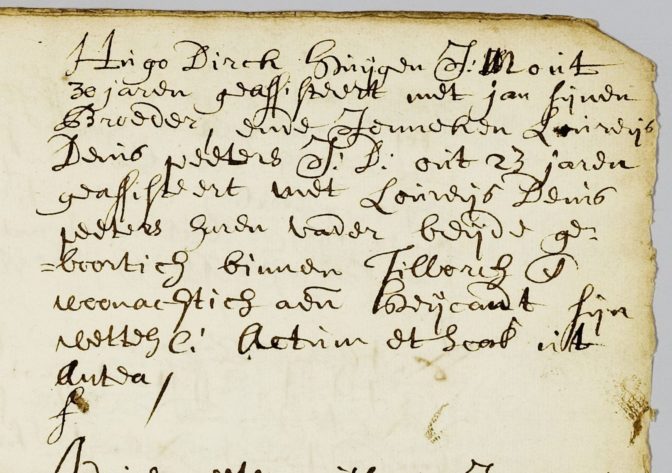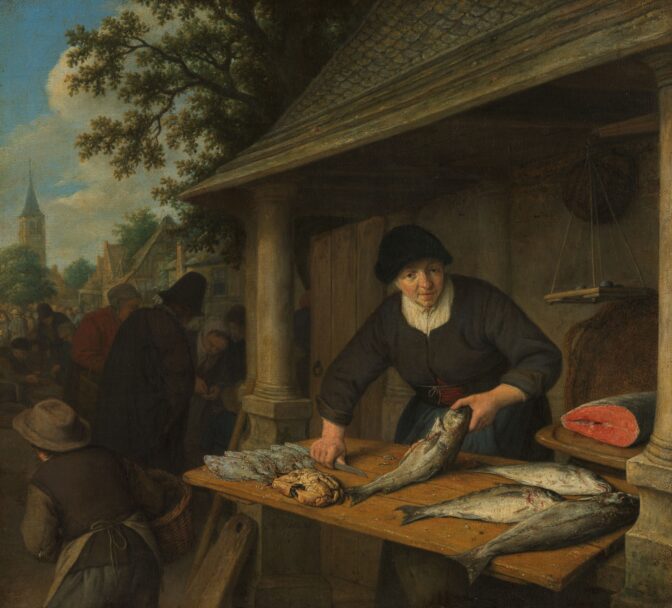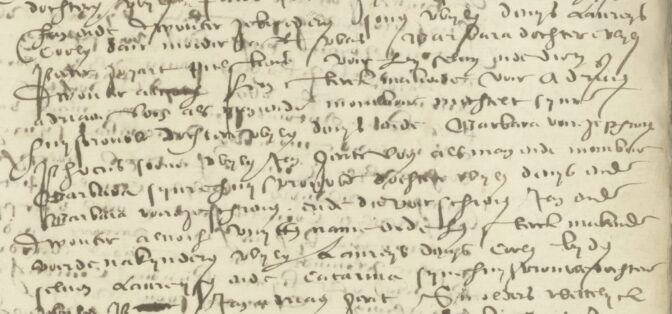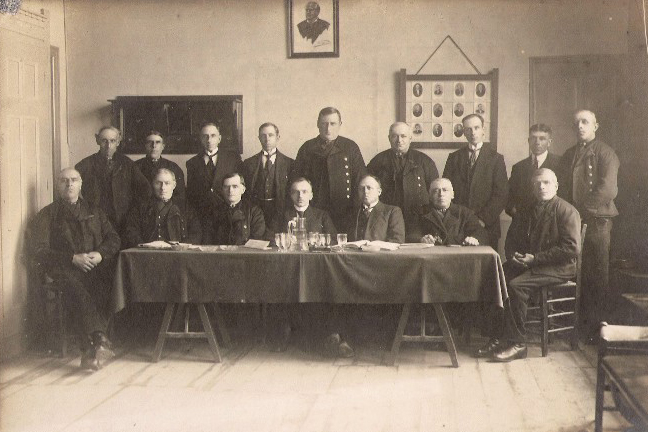In my Level-Up Challenge, I defined six levels of ancestral profiles. In this post, I will give you a basic research plan for an ancestor living in the 17th and 18th century for levels 1-4.
Level 1: Names only
I usually find the name of the person in records of somebody else I am researching. No specific research plan needed.
Level 2: Vital statistics
The civil registration was introduced in 1811 in most parts of the Netherlands (around 1795 for some parts of Limburg and Zeeland). Before this, church records of baptisms, marriages, and burials were the most common sources to record vital events. I try to find all these records.
- Baptismal records. People belonging to some faiths, like Anabaptists, did not practice infant baptism. There may be other records to use instead, e.g. membership records. With Jewish families, circumcision records can help determine the birth date of men.
- Marriage records. Some marriages were registered by the court, mainly if one or both spouses were not Dutch Reformed. There may be multiple marriage records, if the couple came from different places and had banns published in both, if they married at their church as well as for the authorities (Dutch Reformed Church or court), etc. Sometimes, tax records for marriage duties can substitute for marriage records.
- Burial records. Sometimes, tax records for burial duties can substitute for burial records. Also, some churches rented out palls, or charged money for ringing the bells. The financial records of the church can provide information about when a person died. If none of the records created shortly after the death survive, you may sometimes be able to find the death date in notarial or guardianship records, or estatimate it based on other records (see below).
It is helpful to try and find as many of these records as possible. Different records may have different details that may be the clue you need. If there are gaps in the records, I will often try to use other records (like tax records, below) to estimate the time of birth, marriage, and death.

Marriage record of Hugo Dirck Huijgen and Jenneken Laureijs Denis Peeters
Level 3: Occupations, residence, children, spouses
The church records will usually give me the names of spouses. This will usually tell me what parish they lived in. Marriage records typically also mention the place of origin. Here are other records I use to fill in the details:
- Church membership records. If someone moved after they became a member, the church membership records may note the previous or next church they joined.
- Bond letters, whereby a previous place of settlement vouches that they will provide poor relief for the person in case they need it. These bond letters are typically kept by the town where they settled. I mainly search for these if I know the ancestor was not born in the town I later find them.
- Guild membership records, if they lived in a town that had guilds.
- Burgher records, to see if someone acquired burgher rights in a town. Burgher records will often mention the previous place of residence.
- Tax records, to see where they lived, or if someone had to pay taxes for a specific occupation (e.g. a baker having to pay extra hearth tax for an oven). Tax records can sometimes allow you to estimate vital events in the absence of church records. E.g. mill tax records that show the household composition can allow you to estimate when people were born, married, or died. The Liberal Gift (1748) and Poll Tax (1623, Holland) are other examples of taxes that can act as a census substitute since the records include the whole household. The availability of tax records differs per region and per period.
- Manorial records, if the ancestors may have been tenant farmers or serfs. This may tell me what farm they lived on.
- Court records for guardianship appointments or orphan records, especially if one of the parents died before the youngest child was 25.
- Baptismal, marriage, and burial records of the children and spouses (see level 2). I research all the children and spouses at least at level 2 but that is a personal preference.
See the level 3 checklist for more ideas.

Woman selling fish, 1672. Credits: Adriaen van Ostade, collection Rijksmuseum (public domain)
Level 4: Property ownership, military service, religion, criminal activity
The church register should already have given me the religion. Beware that a marriage in the Dutch Reformed Church does not automatically mean they were of that religion, since Dutch Reformed Church marriages were the only church marriages recognized by the civil authorities. People of other denominations often married in the Dutch Reformed Church.
- Notarial records or voluntary court records (in places without notaries), to find land records, prenuptial agreements, last wills, estate divisions, occupations.
- Tax records. Property tax records can tell me what property my ancestors owned. Sometimes tax records were kept over a longer period and will indicate previous and next owners which can help to find deeds of sale.
- Military records, if the previous research indicated a male ancestor was in the military.
- Criminal and civil court records. Not indexed for most courts.
- Newspapers, typically only available in larger cities. The oldest newspaper in the Netherlands dates from 1618.
See the level 4 checklist for more ideas.

Coolen heirs in estate settlement, 12 February 1618
Level 5
At level 5, I consult records that will give me a deeper understanding of my ancestors’ lives. These are often triggered by discoveries during the level 1-4 research and differ greatly from one ancestor to the next, so there is no generic research plan I follow.
Some examples:
- I may consult church council minutes, to see if my ancestors are mentioned. This may tell me about ancestors who were church officials (deacons, church masters), school teachers, ministers, etc, or if their behavior ever gave rise to them being censored.
- I may consult town minutes, to see if my ancestors were discussed. This is especially interesting if the ancestor held public office.
- I may consult registers relating to common land, to see if my ancestors were entitled to their use. That might tell me about their place in the community and can be evidence to link them to previous residents/family members on the same farm.
- I may consult poor relief records, to see if my ancestors needed support. Poor relief was typically provided by the churches.

Zaamslag church council. Image credits: protestantsegemeentezaamslag.nl (public domain)
Examples
Examples of 18th century research:
- Was Eleanor of Aquitaine my Ancestor? Generation 8 – Hendrik Smulders. Includes church records.
- Was Eleanor of Aquitaine my Ancestor? Generation 9 – Jan Smulders. Includes church records, an estate inventory, notarial records.
- Was Eleanor of Aquitaine my Ancestor? Generation 10 – Petronella van Vlijmen. Includes church records, guardianship records, notarial records.
Examples of 17th century research:
- Was Eleanor of Aquitaine my Ancestor? Generation 11 – Jenneken Laureijs Denis Peeters. Includes church records, guardianship records, a 1688 census, estate division, land records.
- Was Eleanor of Aquitaine my Ancestor? Generation 12 – Laureijs Denijs Peter Pulskens. Includes church records, guardianship records, estate division, last wills.
- Was Eleanor of Aquitaine my Ancestor? Generation 13 – Aleid Laureijs Colen. Includes church records, last wills, estate divisions, guardianship records.
- Was Eleanor of Aquitaine my Ancestor? Generation 14 – Laureijs Denis Colen. Includes church records, guardianship records, civil court records, land records, estate division, tax records.

